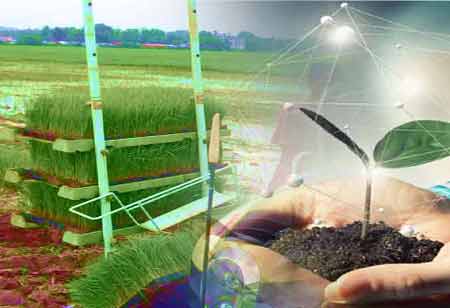Thank you for Subscribing to Agri Business Review Weekly Brief
Revolutionizing Agriculture: Smart Farming and Precision Technologies
Smart farming and precision farming technologies are transforming the agricultural landscape by enabling the tracking of production processes and showcasing sustainability

By
Agri Business Review | Tuesday, July 11, 2023
Stay ahead of the industry with exclusive feature stories on the top companies, expert insights and the latest news delivered straight to your inbox. Subscribe today.
Smart and precision farming technologies, including automation, artificial intelligence, blockchain, and sensor-based monitoring, are revolutionizing agriculture. These advancements enable farmers to optimize production processes, demonstrate sustainability, and meet the growing demand for transparent, high-quality food.
FREMONT, CA: Smart farming and precision farming technologies are transforming the agricultural landscape by enabling the tracking of production processes and showcasing sustainability through practices such as carbon farming and specialized indices for assessing carbon footprint, water footprint, and greenhouse gas emissions. Automation plays a crucial role in this transformation, offering a range of autonomous robots and drones capable of planting seeds, weeding, detecting crop health, and harvesting. Additionally, integrating artificial intelligence enhances machinery capabilities, enabling pest and disease detection and providing technical advice to farmers. As consumers become increasingly conscious of food provenance and quality, blockchain technology ensures the transparency and authenticity of the supply chain, allowing the traceability of products from field to table. Furthermore, the continuous monitoring of environmental and crop conditions through close and remote sensors provides valuable insights for optimizing farming practices.
Precision agriculture relies on the continuous and timely monitoring of environmental and crop conditions facilitated by a wide range of sensors available in the market. Proximal sensing or proximity monitoring involves using sensors placed near the crop. Various sensors provide valuable data, including weather stations, cameras, soil moisture and temperature sensors, leaf wetness sensors, and insect traps. Tractor-mounted sensors, infrared sensors for assessing crop vigor and determining appropriate fertilization, electrical conductivity sensors for soil characterization, and soil compaction sensors for variable-depth analysis offer insights into field conditions. Proximal sensing is cost-effective and provides continuous data for interpretation and use in dedicated platforms such as Farm Management Information Systems (FMIS).
Remote sensing or remote monitoring includes drones, helicopters, airplanes, and satellites equipped with specialized cameras to capture images within the visible and non-visible spectrum. Remote sensing enables operations in large and inaccessible areas with high resolution and accuracy. Although airplanes and helicopters require specialized personnel and costly technologies, satellites offer free, high-quality imagery. However, satellite sensing has limitations such as infrequent image capture and susceptibility to climatic interference like clouds and precipitation. Drones strike a balance between cost, data collection, and information extrapolation, making them a promising innovation in agriculture. Drones find applications in monitoring, crop defense, and other agricultural practices.
Drones or Remotely Piloted Aerial Systems (RPAS), encompass not only the aircraft but also the control station and the communication link. They serve as versatile tools for precision agriculture. Depending on the drone type, they can be equipped with various flight organs (fixed wing or propeller) and cameras or instruments for specific applications. Commercial drones feature micro granulators for distributing granules or pollen for assisted pollination, tanks with nozzles for liquid product distribution such as pesticides or fertilizers, and dispensers for releasing beneficial insects.
Integrating autonomous robots, drones, and AI provides farmers with efficient tools for tasks ranging from planting and weeding to crop health assessment and harvesting. Blockchain ensures the authenticity and traceability of products throughout the supply chain. Continuous monitoring of environmental and crop conditions, both proximal and remote, offers valuable insights for informed decision-making and resource optimization. As these technologies evolve, agriculture is poised for increased productivity, efficiency, and environmental sustainability.





